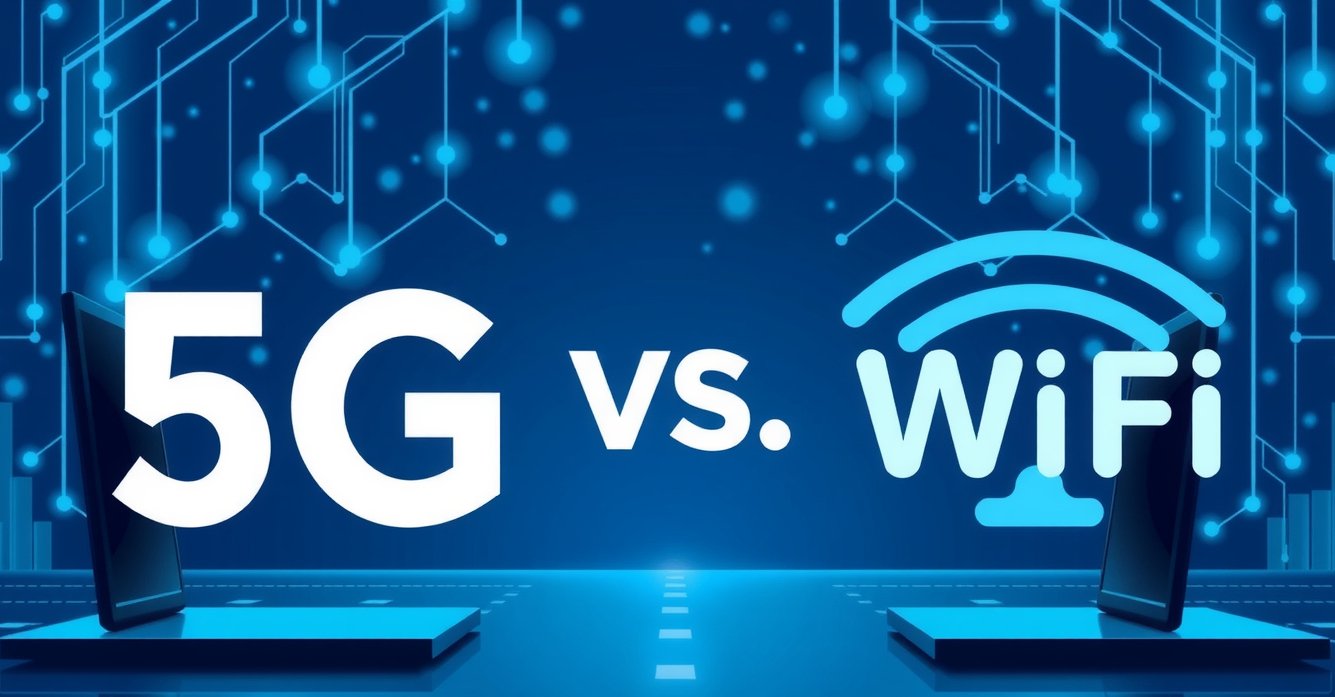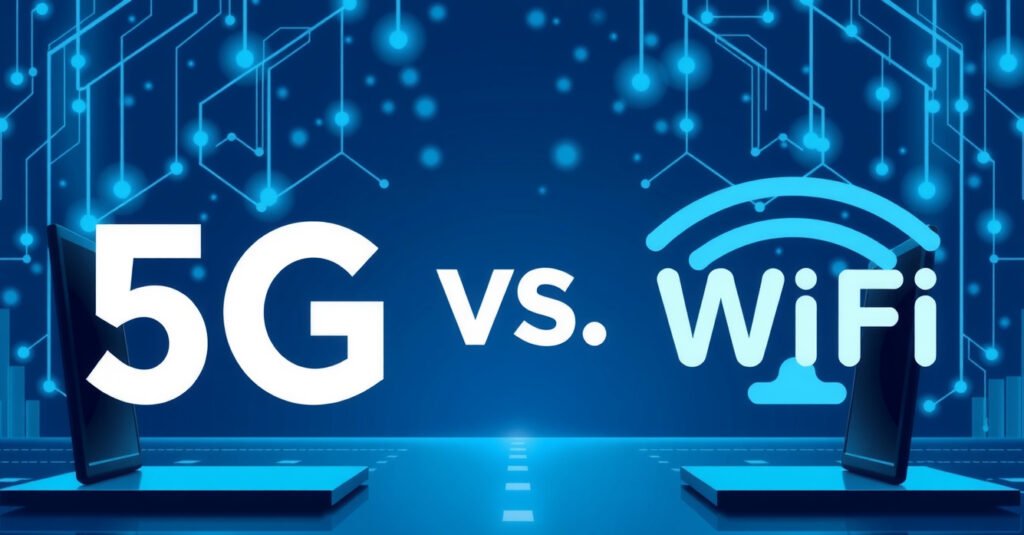Introduction
The world of wireless connectivity is evolving rapidly, with two major technologies—5G and Wi-Fi 7—competing for dominance. Both promise ultra-fast speeds, low latency, and seamless connectivity, but they serve different use cases.
In this article, we’ll compare 5G vs. Wi-Fi 7 in terms of:
✔ Speed & Performance
✔ Latency & Reliability
✔ Coverage & Availability
✔ Use Cases (Home, Office, IoT, Gaming, etc.)
✔ Security & Privacy
✔ Cost & Infrastructure
By the end, you’ll know which technology is better for your needs.
1. What is 5G?
5G is the fifth generation of cellular network technology, offering faster speeds, lower latency, and better reliability than 4G LTE. It operates on three spectrum bands:
- Low-band (1GHz以下) – Wide coverage but slower speeds (~50-250 Mbps).
- Mid-band (1-6GHz) – Balanced speed and coverage (~100-900 Mbps).
- High-band (mmWave, 24GHz+) – Ultra-fast (~1-10 Gbps) but short range.
Advantages of 5G:
✅ Mobile connectivity (works anywhere with a signal).
✅ Ultra-low latency (~1ms for critical applications).
✅ Supports massive IoT deployments (smart cities, autonomous cars).
Disadvantages of 5G:
❌ Limited mmWave coverage (easily blocked by walls).
❌ Requires cellular infrastructure (towers, spectrum licenses).
❌ Higher cost for data plans compared to Wi-Fi.
2. What is Wi-Fi 7?
Wi-Fi 7 (IEEE 802.11be) is the next-gen Wi-Fi standard, succeeding Wi-Fi 6E. It introduces:
- 320 MHz channels (vs. 160 MHz in Wi-Fi 6E) → 2x faster speeds.
- Multi-Link Operation (MLO) → Combines multiple bands for stability.
- 4K QAM modulation → 20% more efficiency than Wi-Fi 6.
Expected Speeds:
📶 Theoretical max: ~46 Gbps (real-world ~5-10 Gbps).
📶 Lower latency (~2ms for gaming/VR).
Advantages of Wi-Fi 7:
✅ No data caps (unlike cellular plans).
✅ Better for high-density environments (homes, offices, stadiums).
✅ Backward compatible with older Wi-Fi devices.
Disadvantages of Wi-Fi 7:
❌ Limited to fixed locations (requires a router).
❌ Interference in crowded areas (unless using 6GHz band).
❌ Early adoption is expensive (new routers needed).
3. Speed Comparison: 5G vs. Wi-Fi 7
| Feature | 5G (mmWave) | Wi-Fi 7 |
|---|---|---|
| Max Speed | 10 Gbps | 46 Gbps |
| Real-World Speed | 1-3 Gbps | 5-10 Gbps |
| Latency | 1-10ms | 2-5ms |
| Frequency Band | Sub-6GHz, mmWave | 2.4GHz, 5GHz, 6GHz |
Winner:
- Wi-Fi 7 is faster in ideal conditions (home/office).
- 5G is better for mobility (on-the-go use).
4. Latency & Reliability
- 5G (1-10ms latency): Best for autonomous vehicles, remote surgery, and real-time cloud gaming (like Xbox Cloud Gaming).
- Wi-Fi 7 (2-5ms latency): Better for 8K streaming, VR gaming, and smart home automation.
Winner: 5G for critical low-latency apps, Wi-Fi 7 for high-bandwidth tasks.
5. Coverage & Availability
| Factor | 5G | Wi-Fi 7 |
|---|---|---|
| Coverage | Requires cellular towers (mmWave is limited) | Limited to router range (~100m) |
| Availability | Expanding globally (but mmWave is rare) | Requires new routers (2024-25 rollout) |
Winner:
- 5G for outdoor/mobile use.
- Wi-Fi 7 for indoor/office environments.
6. Use Cases: Where Each Excels
Best for 5G:
📱 Mobile users (smartphones, tablets).
🚗 Connected cars & smart cities.
🌍 Remote areas without fiber broadband.
Best for Wi-Fi 7:
🏠 Smart homes (8K streaming, AR/VR).
🏢 Offices & stadiums (high-density Wi-Fi).
🎮 Cloud gaming & low-latency applications.
7. Security & Privacy
- 5G: Uses SIM-based authentication, harder to hack but tied to carriers.
- Wi-Fi 7: Supports WPA3 encryption, but vulnerable to brute-force attacks if weak passwords are used.
Winner: 5G is more secure by default.
8. Cost & Infrastructure
- 5G: Requires expensive spectrum licenses, cell towers, and data plans.
- Wi-Fi 7: Needs a high-end router (~$500+) but no recurring fees.
Winner: Wi-Fi 7 is cheaper long-term for homes/offices.
9. Future Outlook
- 5G-Advanced (5.5G) by 2025 will improve speeds and efficiency.
- Wi-Fi 7 adoption will grow as routers become affordable.
- Hybrid solutions (5G + Wi-Fi 7) may dominate in smart cities and IoT.
10. Final Verdict: Which One Should You Choose?
| Scenario | Best Choice |
|---|---|
| Mobile internet (phones, cars) | 5G |
| Home/office broadband | Wi-Fi 7 |
| Gaming/VR/8K streaming | Wi-Fi 7 |
| IoT & smart cities | 5G + Wi-Fi 7 hybrid |
Conclusion:
- Wi-Fi 7 is better for fixed, high-speed needs (homes, offices).
- 5G is superior for mobility and wide-area coverage.
- The future will likely see both coexisting rather than competing.
FAQs
Q1. Can Wi-Fi 7 replace 5G?
→ No, they serve different purposes (fixed vs. mobile).
Q2. Is Wi-Fi 7 available in India?
→ Yes, but routers are still expensive (2024-25 rollout).
Q3. Which is better for gaming: 5G or Wi-Fi 7?
→ Wi-Fi 7 (lower latency in controlled environments).
Q4. Will 6G make Wi-Fi obsolete?
→ Unlikely—Wi-Fi will evolve alongside cellular networks.





